Propagating house plants - Snake plant, Begonia, Arrow Plant, Pothos and Spider plant 🪴
Plant babies are fun, just add dirt and water, light, and humidity. *The post got too long for email, but has lots of images.
Propagating is plant jargon for making new plants from cuttings of older, larger plants or other methods can be used depending on the plant species. It is fun to expand your indoor garden or perennial herb and flower garden. Tuberoys plants can benefit from having an overgrown mass broken into smaller sections and given their own pot.
Why bother with house plants? Beauty, calming, and better air quality is possible.
“Spider plants are gorgeous, sprawling greens that clean the air and are pet-friendly! NASA’s study found that spider plants were able to remove 95% of chemicals from the air in 24 hours.
Spider plants filter toxins including:
carbon monoxide; benzene; styrene; formaldehyde; xylene; toluene.
Snake plants are easy to grow and happy in all kinds of lighting situations. “They’re robust and statuesque, which means they don’t take up much room in terms of width, and they’re also one of the best air-purifying plants,” says Muñoz. This air-cleaning plant is also commonly referred to as mother-in-law’s tongue, thanks to the sharpness of its upward-growing green leaves.
Snake plants filter toxins including:
benzene; formaldehyde; trichloroethylene; xylene.
Golden pothos - This leafy vine can be hung in midair or set on a shelf to climb all the way across it. Also known as the Devil’s Ivy, it grows steadily in low light or fluorescent light. It’s one of the easiest plants out there to keep alive.
Golden pothos plants filter toxins including:
toluene; formaldehyde; xylene; trichloroethylene; benzene.
Philodendrons (including heart-leaf, elephant ear, and sellous philodendrons) are all effective air-purifying plants.
Philodendrons filter toxins including:
formaldehyde
21 Best Air-Purifying Houseplants (architecturaldigest.com) *Peace lily and Aloe Vera are also on the list and a few types of Dracaena along with ferns, Bamboo palm and Gerbera daisy.
Snake plants may be divided at the connected base of roots but it also grows readily from cut leaves rooting and sprouting a new baby plant.

This video shows how to propagate Snake Plant, Sansevieria trifasciata, in a tub of water - in dark. It doesn’t say how long it took to sprout them. Warmth likely helps. She then arranges the trimmed sprouts in a clear glass of water for a table-top display. The sprouts will grow in the vase of water with the help of fertilizer enriched water occasionally.
More Science about the growth habits of Sansevieria/Dracaena is in the video farther below.
House plant care seems to have a large number of Youtubers with videos about caring for different types of plants. The ‘green thumb’ of a gardener is paying attention to how each plant grows and what it likes regarding warmth, light, and humidity - and remembering to water regularly. It is a chore, or a labor of love if you love the hobby.
How we can propagate plants also varies - some only grow from seeds, others may grow from leaf or stem cuttings or by underground roots or trailing vines. Seeds are generally slower to reach a large plant size than taking a cutting or dividing an overgrown clump of something - or giving trailing baby plants some dirt.
I am also propagating wild strawberries that were trying to grow on a mossy sidewalk from trailing vines with baby strawberry plants - somewhat similar to how a spider plant gets baby spider plants on a draping shoot-like extension which flowers first, then seeds and/or a baby plant forms at the node.
Tip in this video - let the leaf cuttings dry over night or for 24 hours before putting then in the dirt. It forms a sealed edge that is less likely to mold or get a plant infection. Be sure to plant them so up is still up, and down is still down. Marking the leaves with a Permanent marker as you are cutting them can help prevent putting them in the dirt upside down. ⬇️⬆️
Even more science - making the pitch to keep the Sansevieria name: SNAKE PLANT TOUR at Fairchild Tropical Botanic Garden — Ep. 303, Summer Rayne Oakes, (Youtube). *Long video, I skimmed it to look at the various cactus like snake plant varieties.
How to make Snake plants grow taller - in this video - He is guessing but it is not bad tips - Use a deep pot with good potting soil. Don’t overfertilize but do transplant and change the dirt occasionally. Don’t cut the root mass apart to propagate them from brand new starts if you want taller plants. Provide a sunny window with plenty of light . . . What I have found is that really good light is what helps mine grow tall, along with having transplanted them into good dirt. A grow light is what makes a difference for my plants with a lot of shade rather than sunny windows. They can get really tall with the grow light, or summer outside weather - three to four feet tall.
How to propagate plants varies by plant type.
Begonias - tropical flower - treated as an annual outdoor flower, or houseplant in non-tropical regions.
Begonias can often root in water or dirt from a simple cutting. Rooting hormone does help while it isn’t necessary for the Draceana/Snake plants discussed earlier.
Reducing leaf surface on a cutting can help with survival, so it has less to support while roots are forming. Remove the larger leaves or cut them in half to reduce moisture loss. A humidity tent might help them root. Water a cutting more often than the plant would need. Keep the soil moist but not flooded, while rooting.
Arrow Plants - tropical vine or houseplant, short shrub or gangly vine.
Arrow plants will show root buds when a vine section could be separated from the smaller base plant. https://greg.app/arrowhead-plant-benefits/
I hadn’t realized until today, looking it up, that the plant forms not very straight vines. The plant was so gangly and falling over in three directions that I had recently cut the dangling sprouts and started them in the large pot with some begonia clippings. The gangliness of the three stalks has straightened out and they seem happy.
The bushy base plant is starting another vine, it is getting root buds. The leaves stay small unless they are on the gangly vine according to info online. The plant doesn't get bigger than what I have in the brown ceramic pot (handmade by my mother).
One stalk of the Arrow plant is larger than the rest, and has started forming root buds. In a tropical Rainforest it would have a tree trunk to climb and bark to grow roots in.
Pothos - a vine that roots along tree bark, every leaf node could be a cutting. Philodendrons are similar.
One Pothos clipping took root out of ~ 4 that I had put around the base of this Arrow plant when I had moved it into a bigger pot. Now the Arrow plant is bigger and the Pothos needs to be given its own pot, or maybe it is doing fine. It looks happy and green. More on Pothos is at the end of this post. Pothos are a bit thicker of a leaf and can be in holden or light green colors.
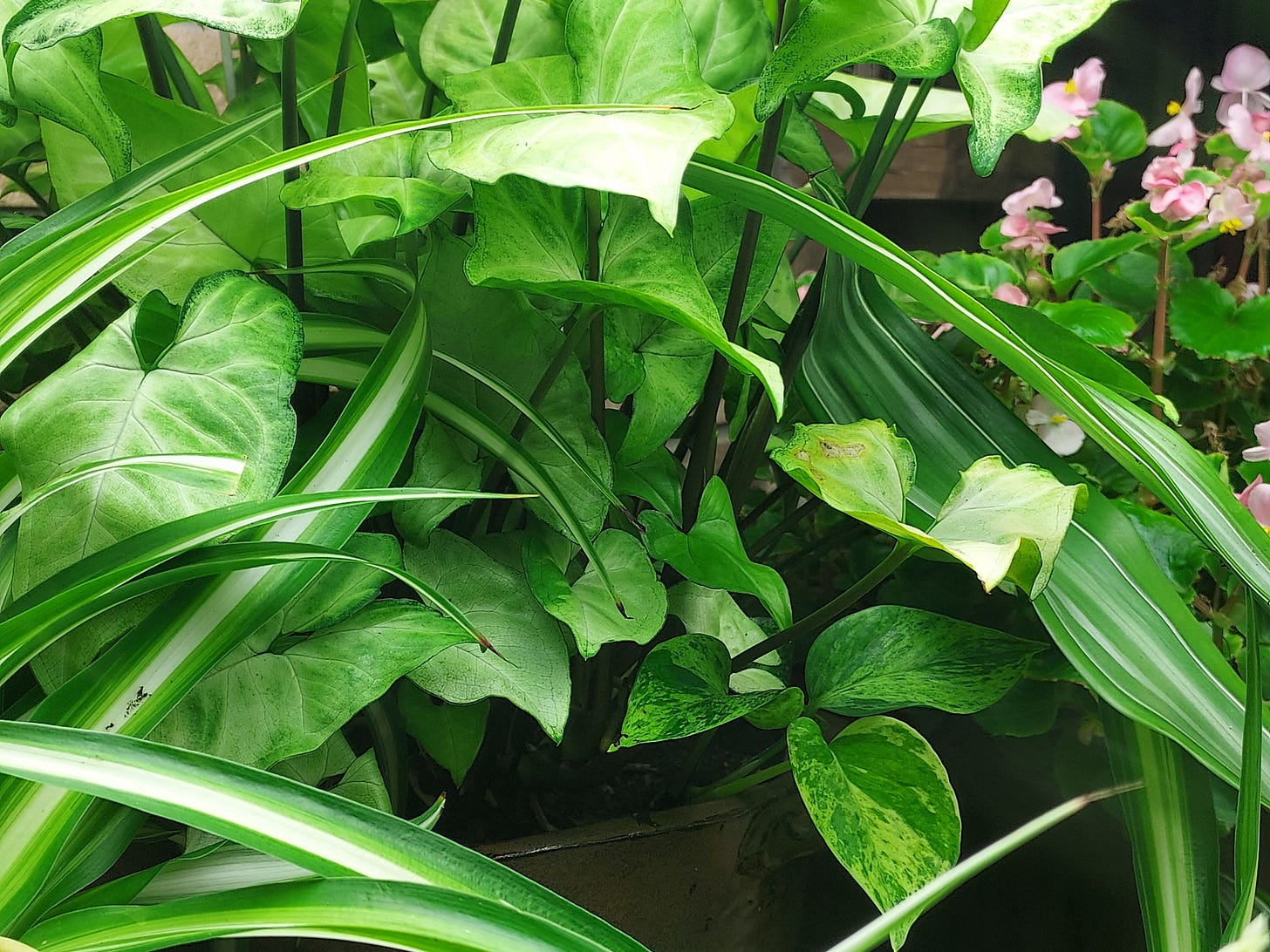
The Philodendron in the hanging basket in the image is darker green than the Pothos at the top of the image. The Philodendron is hanging down in the image below.
Spider Plants, are also called Air Plants because they seem to grow in mid-air - or are like a spider hanging on its web.
Propagating spider plants is easy once you have the a plant with babies. Just clip off a baby that has roots and plant it.

The baby spider plants grow from the flowers, and or seeds form from the flowers. These spider babies (above image) don't have root buds yet and aren't ready to grow on their own yet.
Keep it moist consistently while it is establishing its roots. A humidity tent might be helpful and warm conditions, 70s'F, rather than 60s.

All of the larger baby spider plants, with root buds (image above), could grow given their own pot of dirt and steady moisture for a while. I particularly like this Spider plant. It was uniquely large to begin with and the only one with reverse, white outer stripes and a wide green center. Out of 22 spider plants I got in clearance holiday planters last December (2 per sickly Poinsettia planter), that plant had stood out, larger and greener than the rest. Maybe the expanded green area on the leaf gives the plant more chlorophyll growing energy than the typical variety with their mostly white leaves. 🤔
Propagating spider plants from rooted baby spider plants 🪴 is easy.
Clip a baby spider plant that has root buds showing, from the mother plant, and start it in a four inch pot. Water ~ keep it damp while the roots are forming. Then water every 1-2 weeks once it is established.
Maintenance: Spray with Neem/Dr. Bronner’s dilution every few weeks to keep the leaves shiny and bug free. Remove dead leaves and keep the soil free of composting material that might house insects or mold.
Spider plants can grow fast given reasonable light. Transplant into a 6 or 8 inch pot when it has tubers filling its little pot.
Signs it needs transplanting- it is drying out really fast. Or - It doesn't seem to be growing well anymore and is sickly. Dirt can become too salty and lacking in nutrients. Switching the dirt can help revive a sad house plant and make it happy again.

The large Spider plant has long tuberous roots. Large overgrown plants can benefit from being divided into 2-4 sections and repotted in more large pots - give it a similar height pit because the tubers are used to that size pot already.

Putting a house plant into too large of a pot can lead to it quickly growing long roots straight out to the edge of the pot where they then start circling the edge. Transplanting in gradual steps with a 2-inch larger pot each time will encourage full root growth between each jump up in size.
Larger pots are nice because they allow for less frequent watering, but they take up more space around the house. A root bound plant will dry out quickly between waterings though and that can be a sign that it needs to be transplanted or divided. Plant sharing clubs can be a nice way to give away extra houseplants if space is limited - divide the too large plant and put part of it back in the same pot.
Spider plants like a deep pot and prefer well drained soil to being in a hanging basket that has no drainage holes. The tuberous roots can store water for the plant, helping it during the forgot to water my houseplants ‘drought’, but chronically wet soil will cause the roots to rot.
In the image below, the Spider plant has reached the base and edge of the pot. It is ready to be transplanted and/or divided. The roots hadn't started circling the base of the pot so it isn't ‘rootbound’ yet.
Dividing my Spider plants became a photo journey.

The deer eaten plant is growing tiny sprouts. It is two clumps that are not doing well, overgrown root masses choke themselves out and overgrown leaves are more prone to have spider mites or aphids or something unwanted. I sprayed these down heavily with Neem oil & Dr. Bronner’s solution and also removed a couple slugs which eat holes in the leaves. It is good to clear away leaf debris from the soil surface occasionally. Mold and insects will grow in it. Moldy soil is not improving indoor air and no one wants aphids or mites.
Each of the deer eaten clumps became three smaller sections once I seperated the tubers. Just cutting in half wouldn't work well because they are intertwined, like knotted hair or octopus that got caught in the spin cycle.
To separate the larger clump, shake off all loose dirt and find the main plant stalks, spiders or octopus with frilly leaf hair, have entangled legs. Gently grasp the plant stalk/neck of two sections and wiggle and pull gently and they will gradually let go of each other. The plant needs to have been watered so the dirt isn't hard.
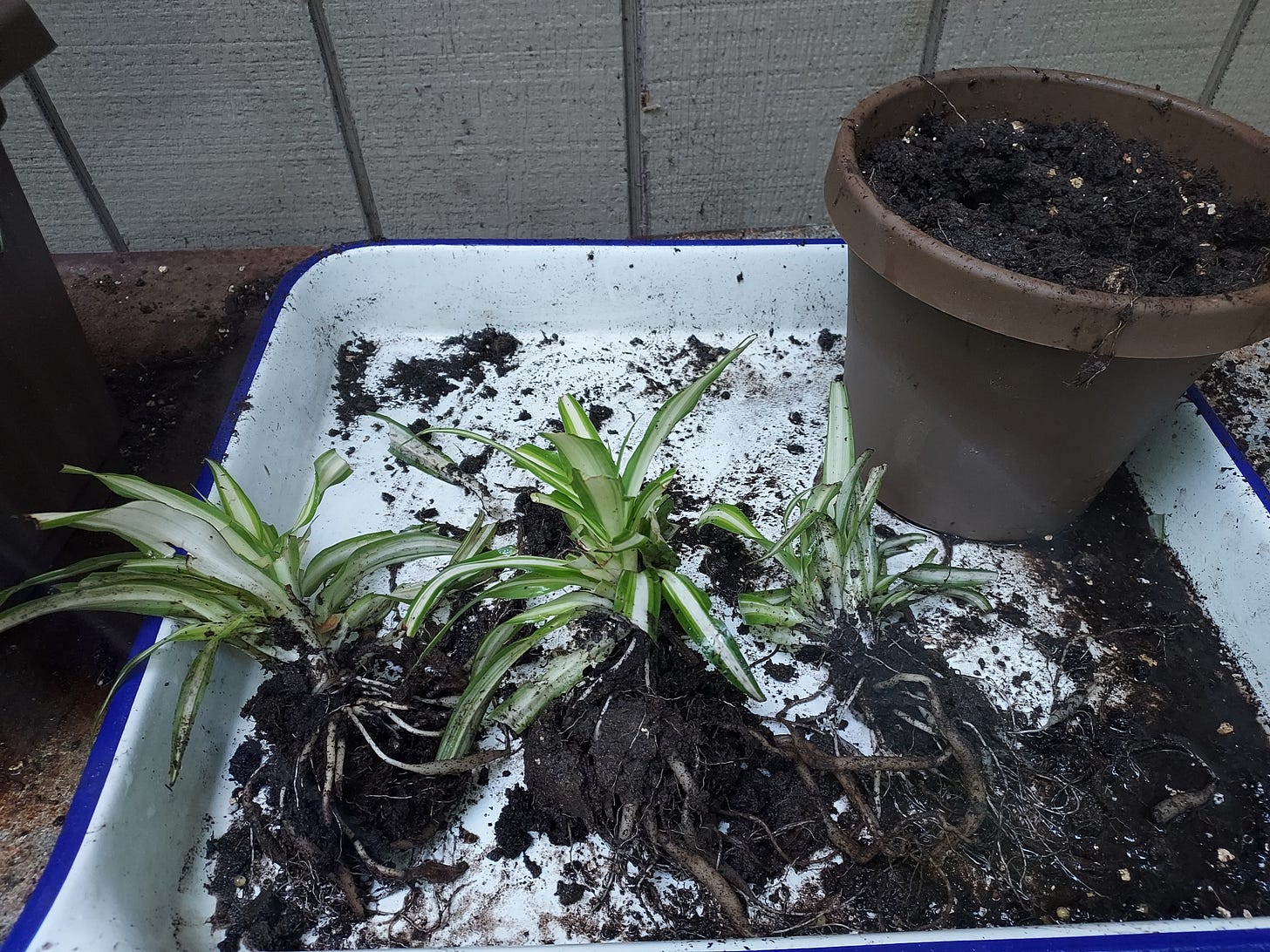
The overgrown pot became four sections once I had three separated, I saw that one was really two. The tangled roots seem to stunt the plant from getting bigger taller leaves. See how much bigger the tubers are on the plant that had been indoors, and not so entangled with its roots? While it was in a smaller pot, this plant had plenty of room to grow initially. The deer eaten plants had been ready to divide when I put them in the large pot this spring so they weren't doing as well even un-deer-eaten.
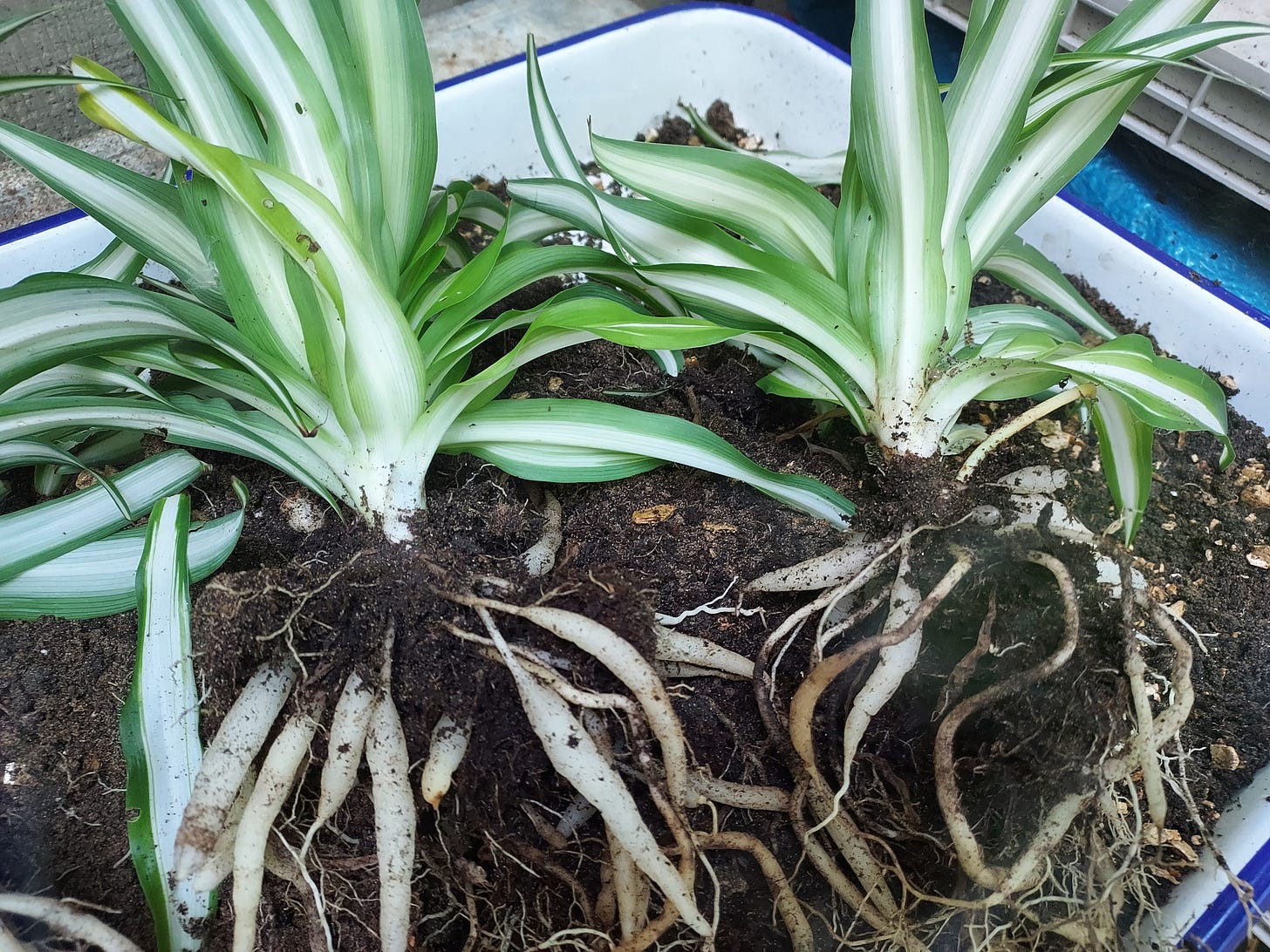
The two pots of plants became six pots, the largest plant with four small ones in the corners of the deep square planter; three 6- or 8-inch pots and one 4-inch pot - I am running out of empty pots.

How many house plants is too many?
When you can't keep up with the watering or run out of light areas, then you may have too many house plants. For better air cleaning benefits, though, we probably need more than most of us have. We might want one or two house plants per 100 square feet of indoor space (I’m guessing a full size one, rather than a junior). That’s about 10 or 20 of the good air cleaning species per 1000 square feet of indoor space. 🤔 And that is a lot of house plants and a lot of watering. It is minimally a weekly chore of an hour or two to take care of my numerous plants. They got a bit neglected some months. I like plant species that can handle drought occasionally.
The search results suggest a follow-up study showed less of a benefit for air cleaning than the NASA scientist’s study. It found that up to 1000 plants might be needed for ‘cleaning’ indoor air. (Brave AI summary) That would be more plants than space in the house → get a tent, sleep outside. The air really is substantially better when sleeping outside. I learned that while traveling and sleeping in my car.
It might also be a question of what are we comparing it too? A fan powered HEPA filtration air cleaner? House plants probably aren’t at that level of air circulation. And a HEPA air cleaner isn’t using up CO2 and producing Oxygen for us.
When I read a lay-reader book about the NASA plant study, some points were made about improving the air cleaning potential of your house plants:
Water the plant consistently. A dried-out plant will not be respiring much, so it won’t be cleaning the air much.
Misting the plants can help with increasing respiration if the plant is a type that likes humidity.
Misting or spraying at the kitchen sink or in the shower occasionally can help give the whole plant a nice bath and wash off dust build-up. Houseplants do get dusty and that will make their leaves less efficient.
Weekly spraying with Neem/Dr. Bronner’s diluted spray helps with cleaning the plants and preventing insect pests.
Letting houseplants get moldy and sick will not help your indoor air quality.
Plant services exist where a person who knows plants visits weekly to care for the plants the service provides. If a plant gets sickly, it is swapped out for a healthy one from the service’s greenhouse. Or some plant maintenance services might be available to care for the plants that you already have but don’t have time to care for. This could also be a potential small business to create for yourself if your area doesn’t seem to have plant maintenance providers. (Brave AI summary) We have outdoor landscaping, why not have indoor landscaping services too? (Money…)
Spider plants also grow seeds.
Pothos or Philodendron
Propagating Pothos or Philodendron is also fairly easy. Each leaf nodule has a root bud which it would like to grow into tree bark with. They are tropical vines. Keep a humidity tent over the cuttings, or root a vine tip while the vine is still attached to its original root base.
I have had one Pothos take root from a clipping stuck in an uncovered pot butbthecrest didn't survive. Using a moisture trapping humidity tent might help. That was recommended in the water rooting video for Snake plant leaf cuttings.
In the image below I am trying the second pot method, the vine is still growing out of the upper planter.
I added two spider plant babies too.
The air in the basement does seem fresher since moving the plants back inside. And it is gun to see the plants doing well, happy with their fresh dirt and bright grow light.
~~
Addition - plants shipped by mail may be packed ‘dry root’ as some states don’t allow soil to be shipped as it may harbor insect pests. Transplant your plant as soon as it arrives.
This is a nice How to article for packing live plants to be mailed (mikesbackyardnursery.com).
Disclaimer: This information is being provided for educational purposes within the guidelines of Fair Use and is not intended to provide individual health care guidance.







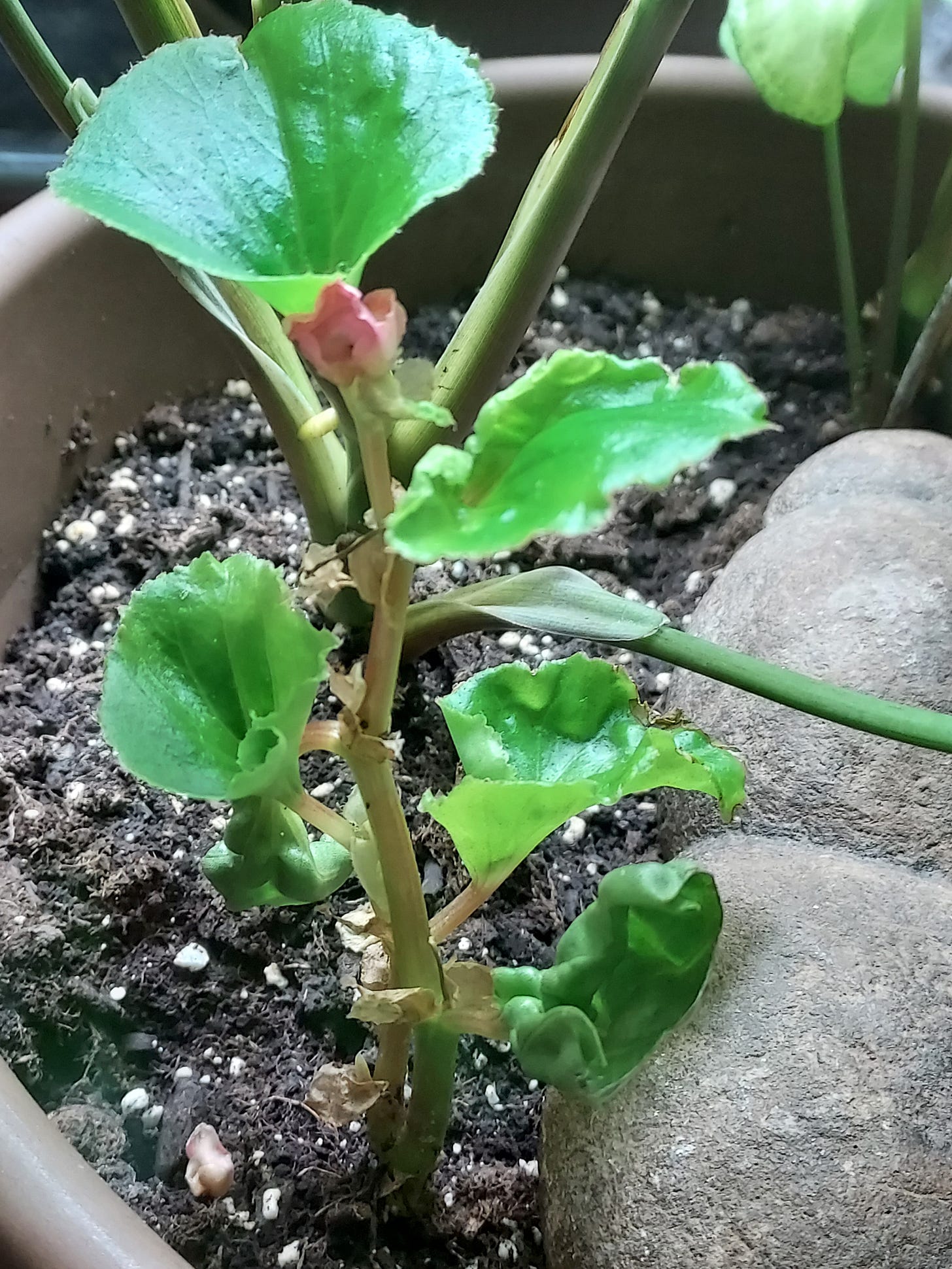
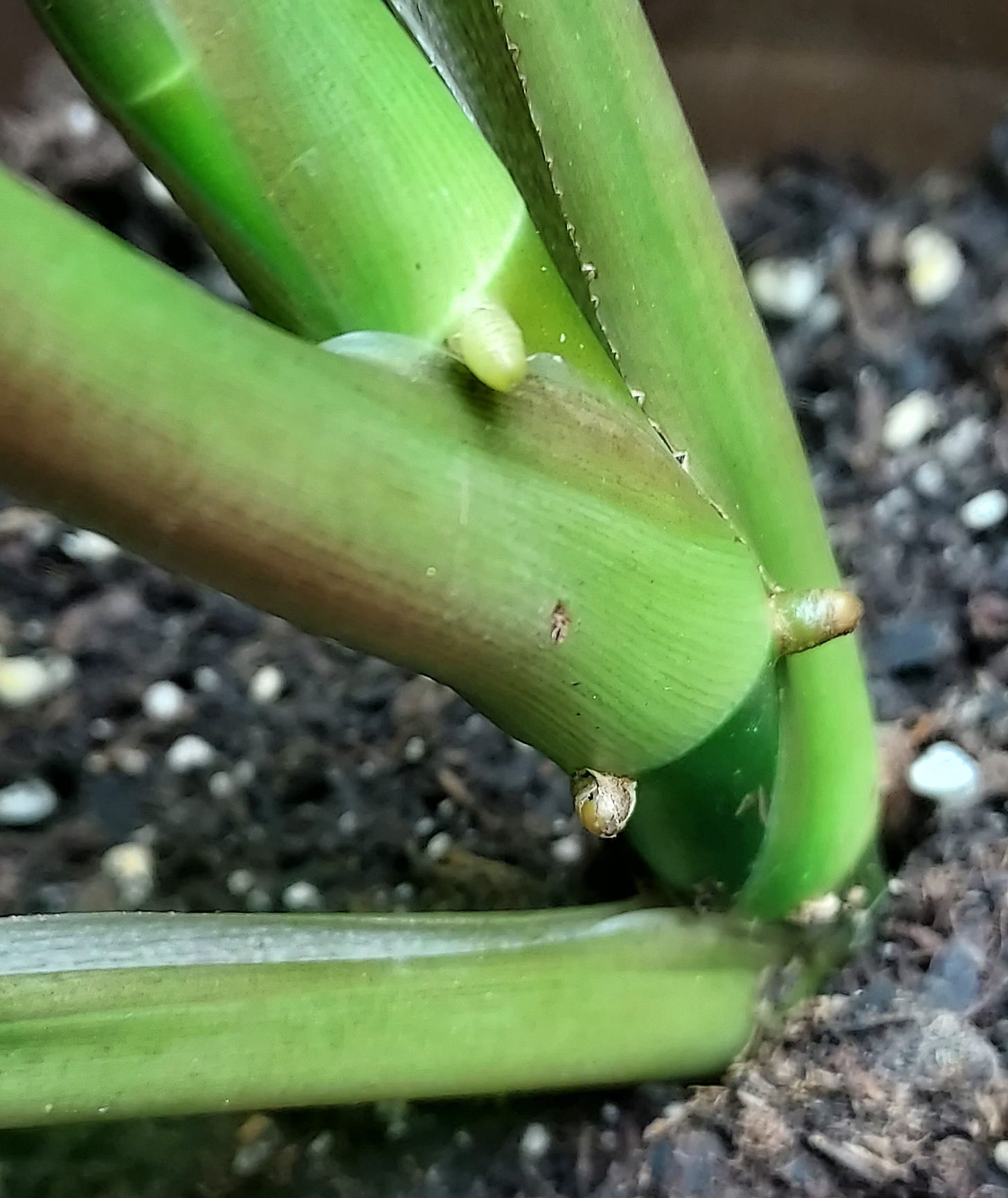
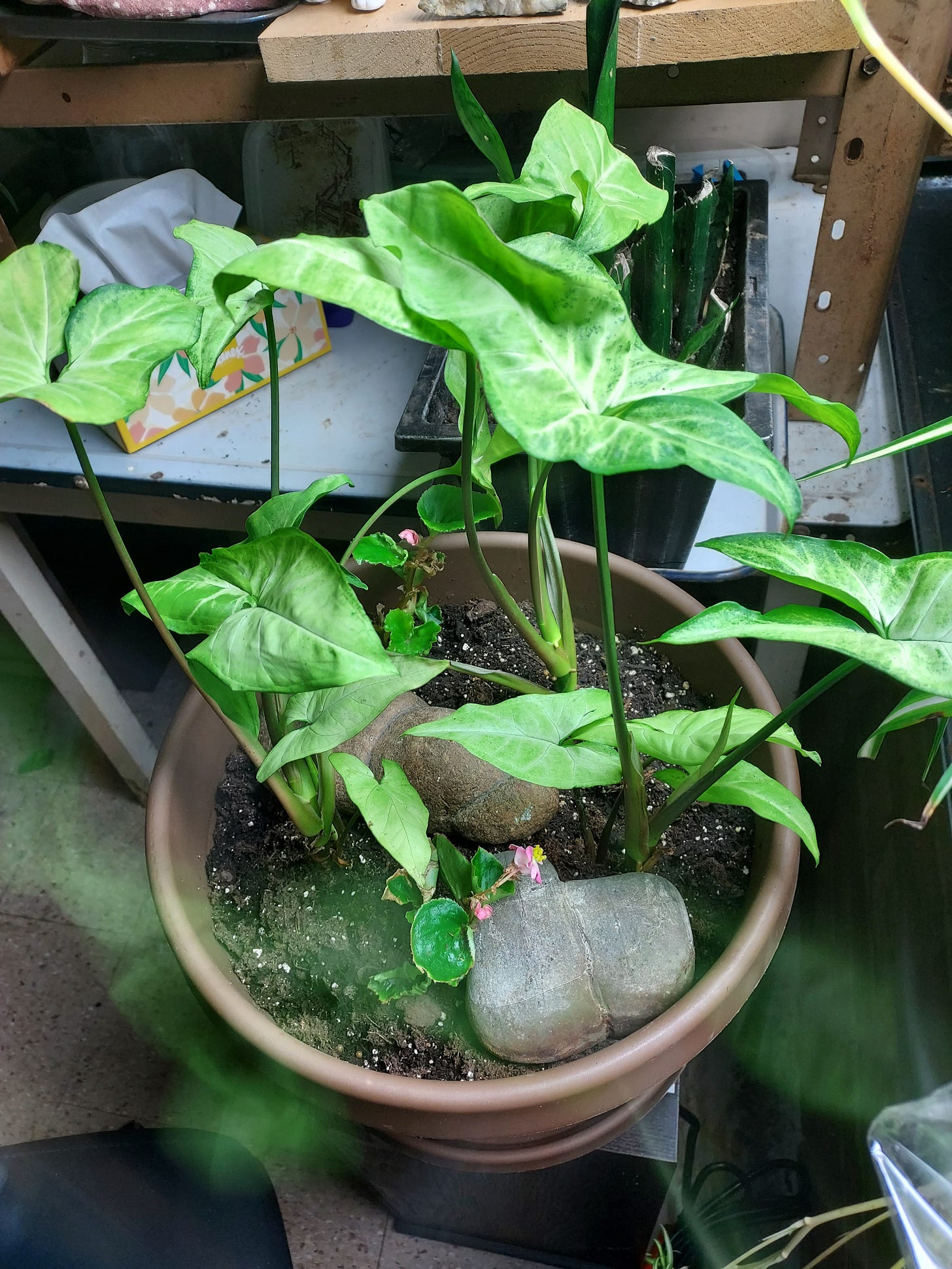

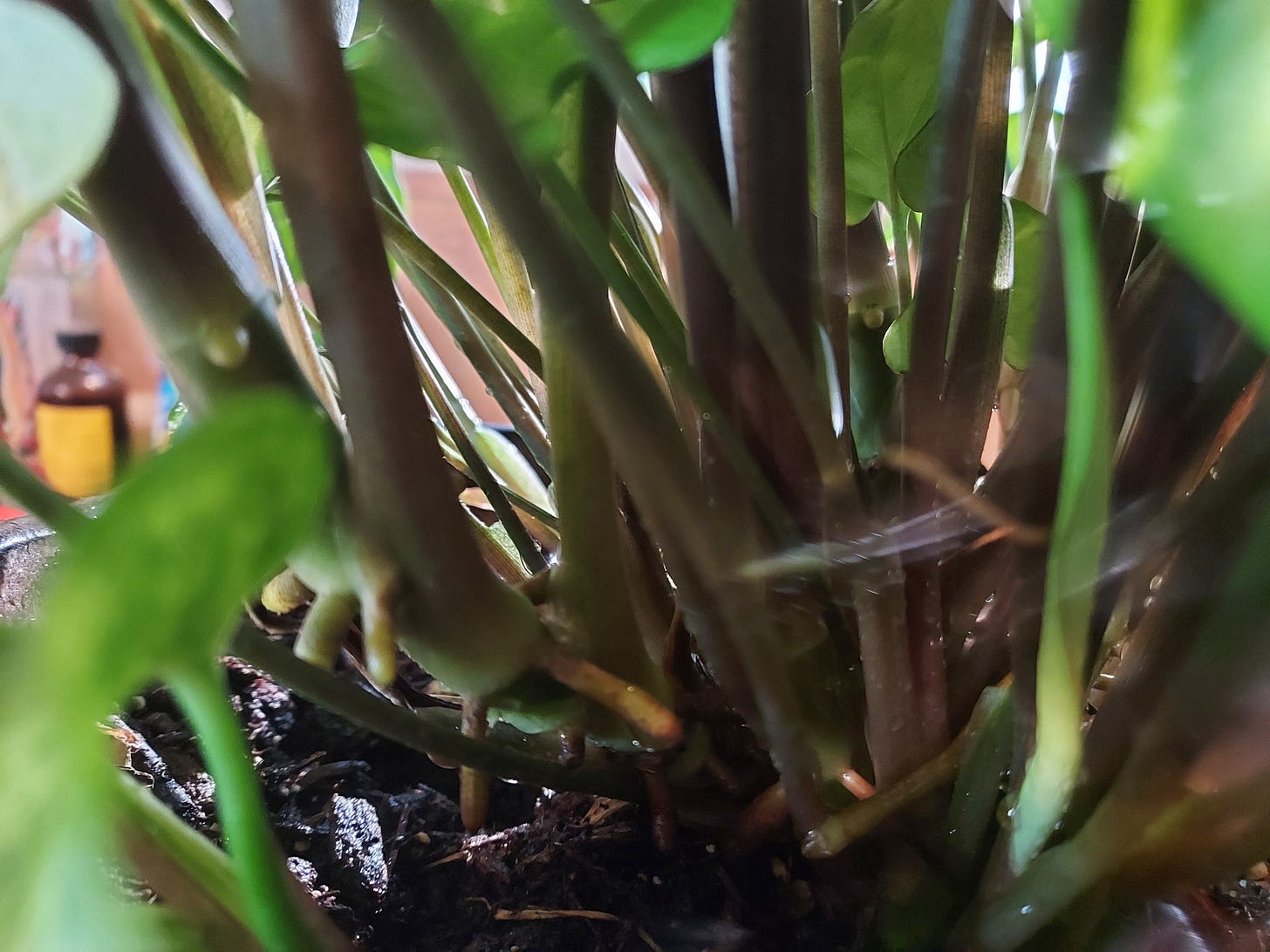


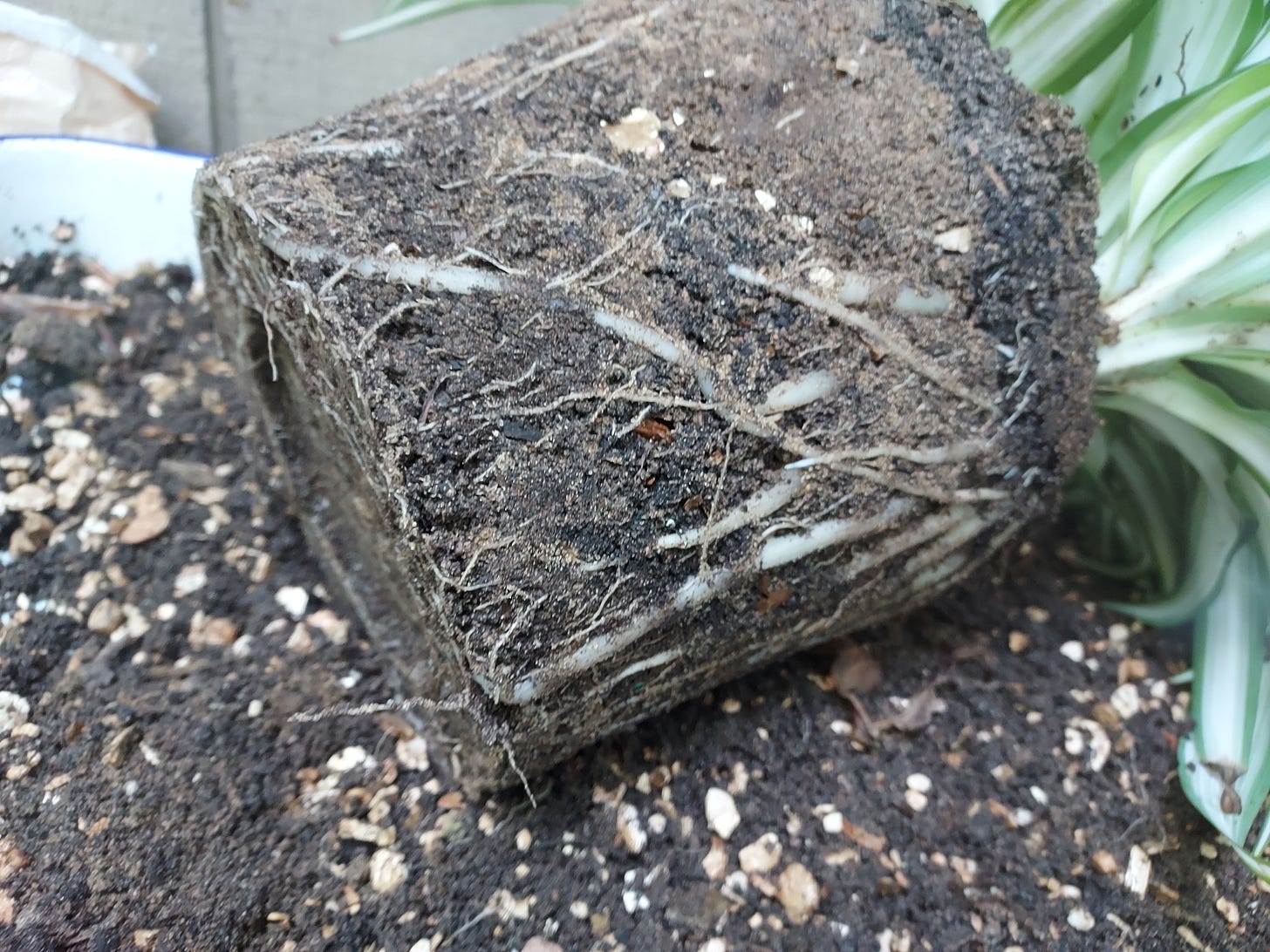
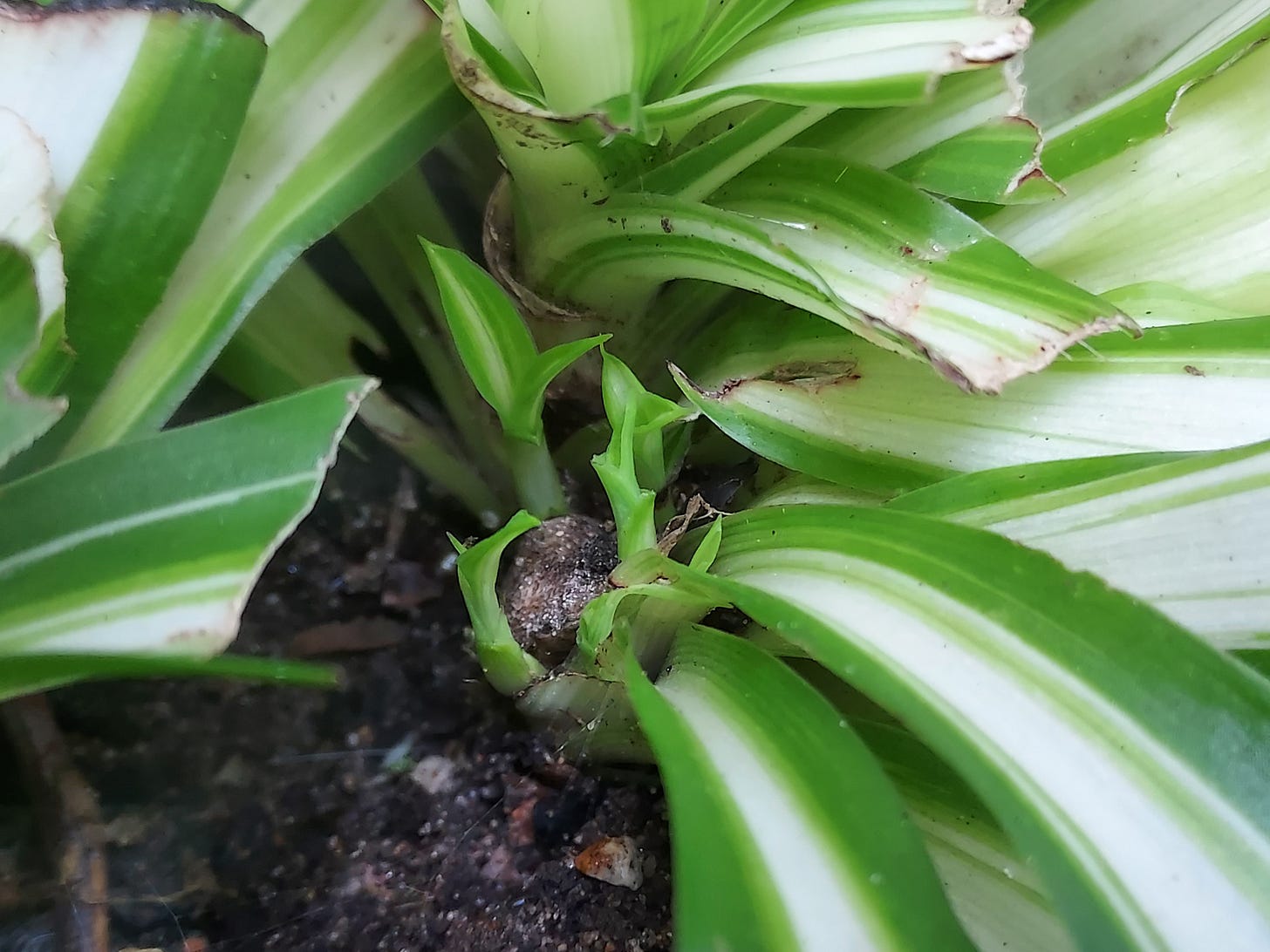
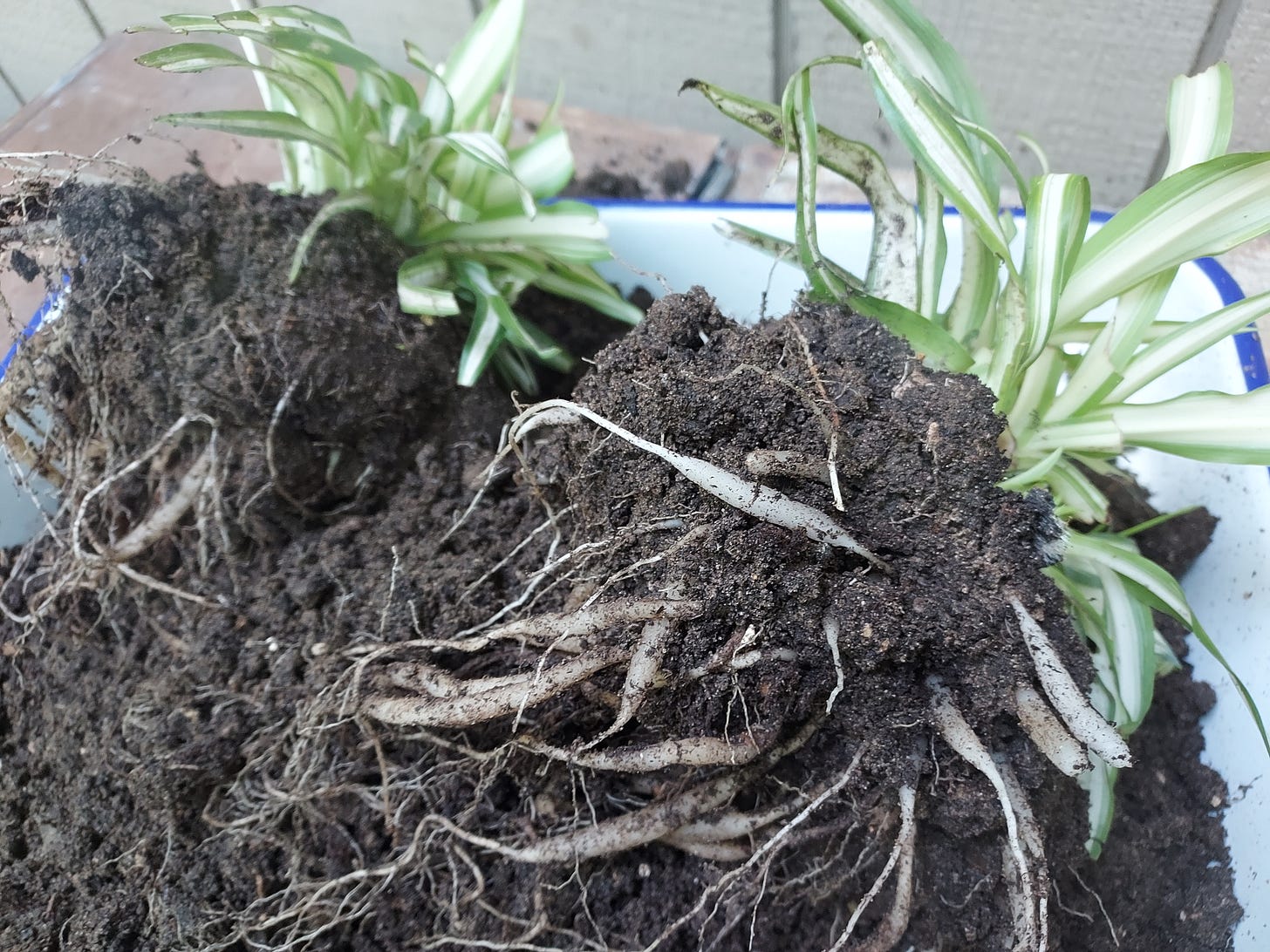


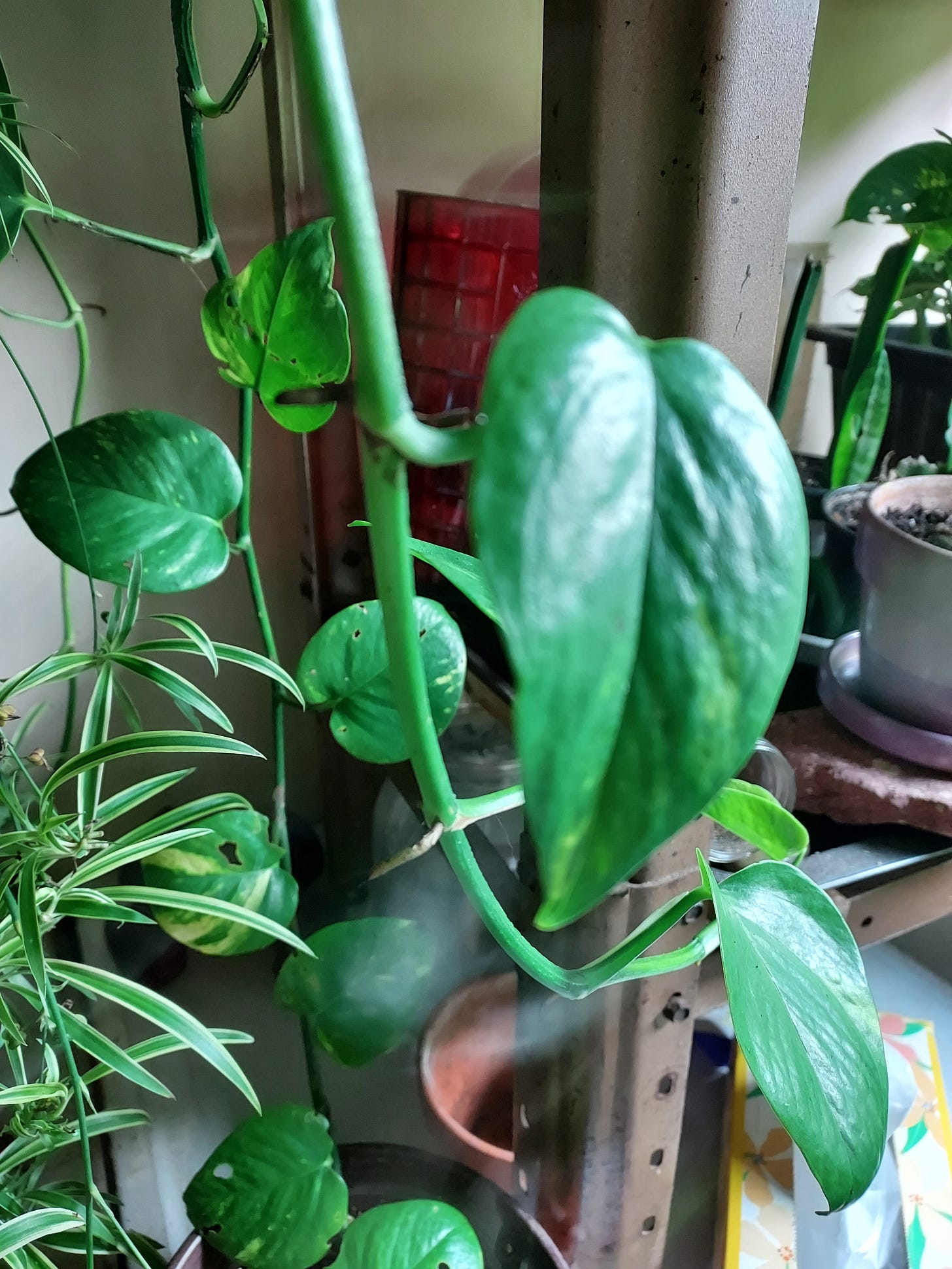

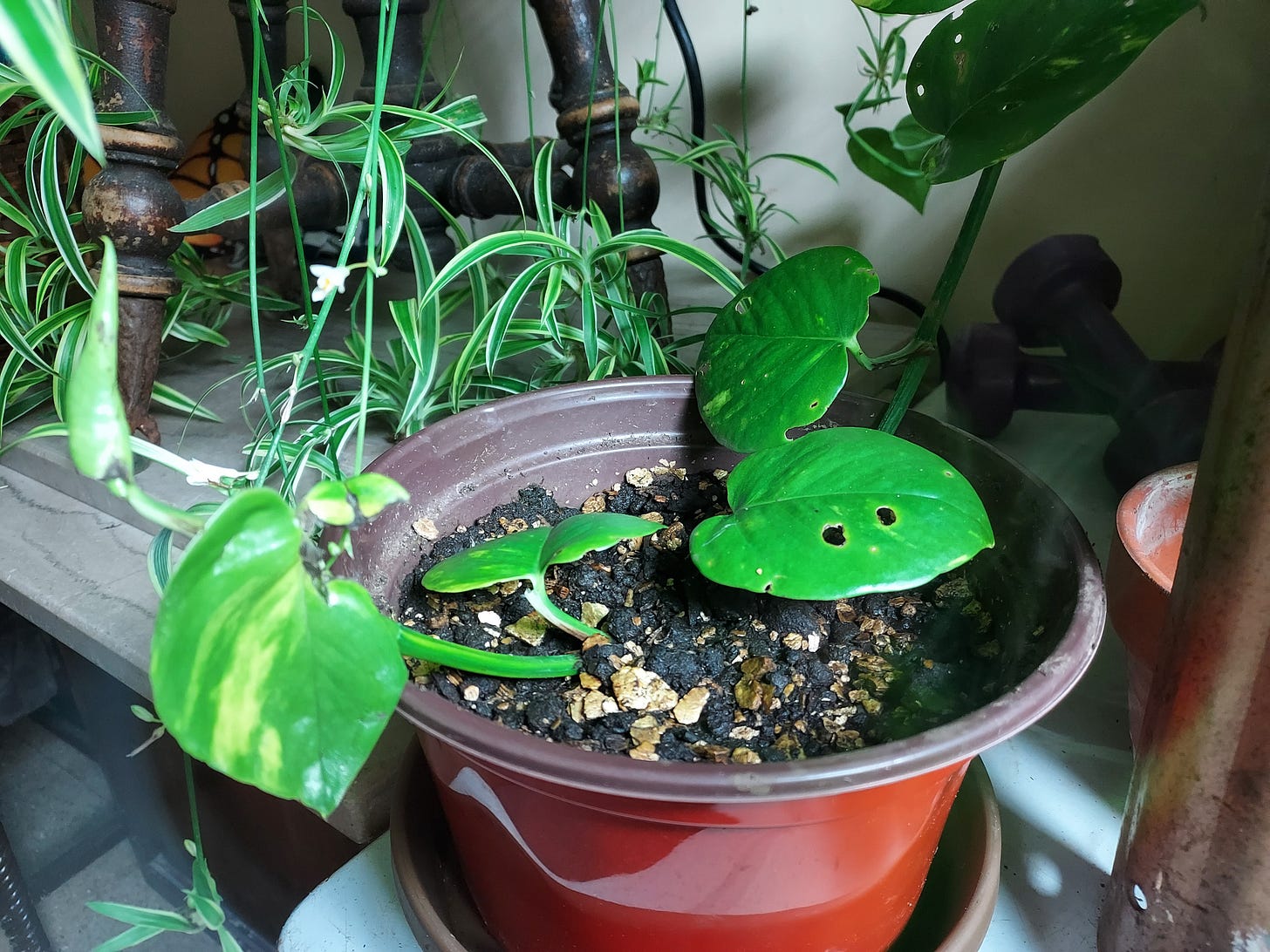
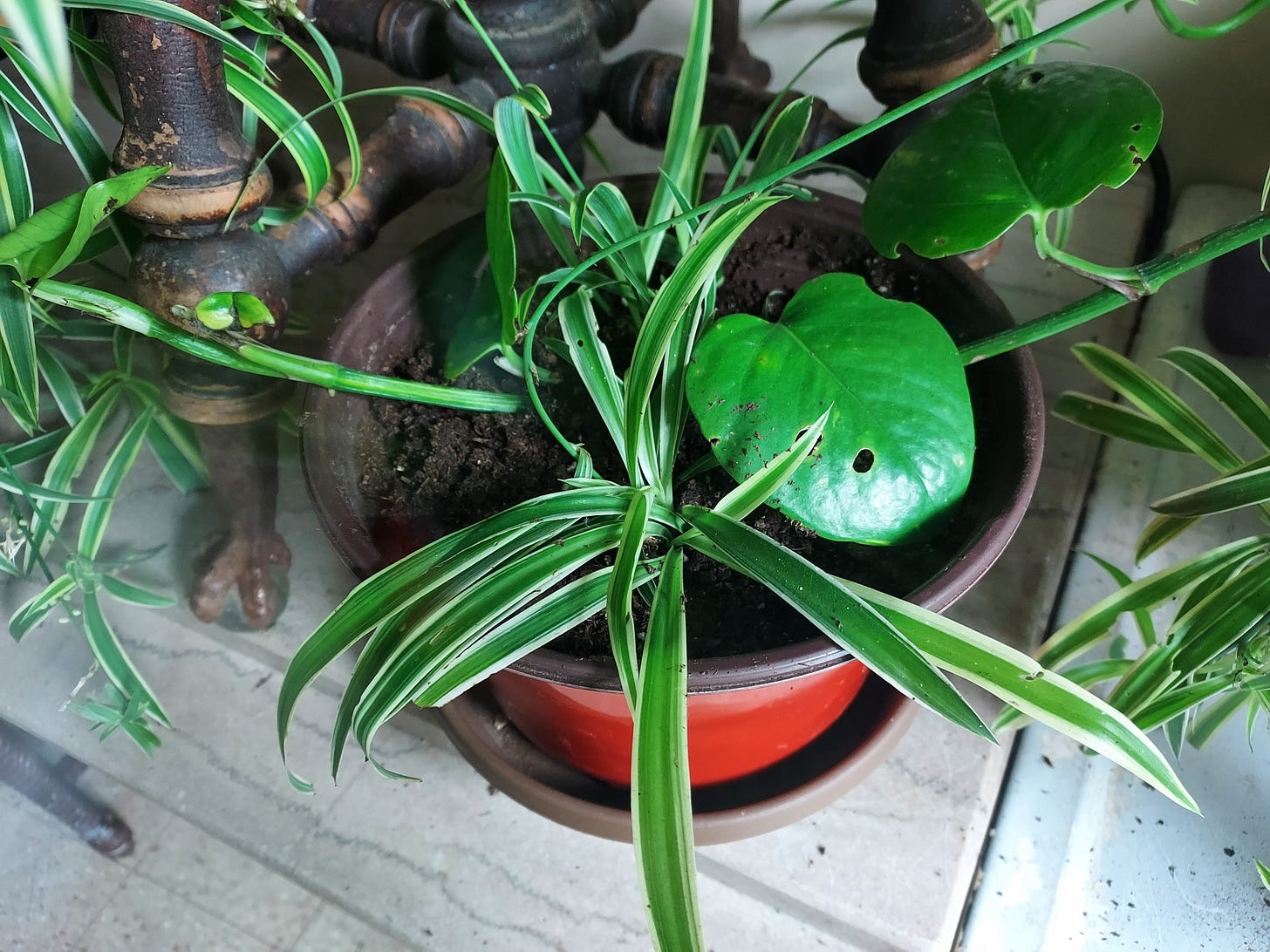
One of the plants that I have the hardest time keeping alive indoors is Fern. I love fern and it does great outside but inside I just don’t know what I’m doing wrong.
I do enjoy your posts :)